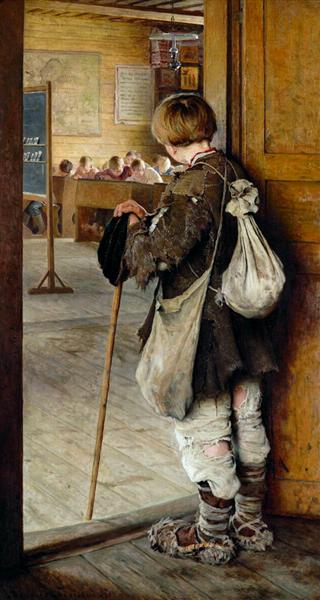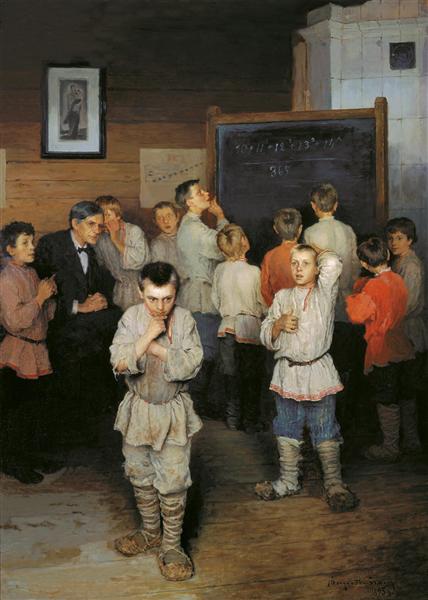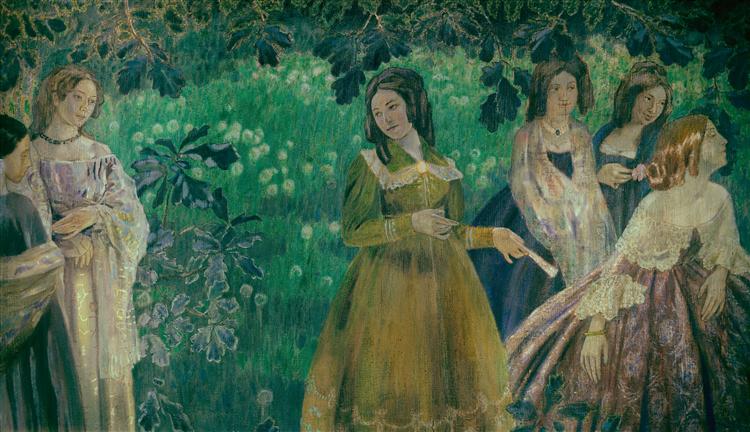
Abram Arkhipov’s “visiting card” is the depiction of various episodes from the life of peasants. The artist worked on the canvas “Washerwomen” for almost ten years. During this decade, he painted two versions of the picture. This painting has become one of the most important works for the artist.
Abram Efimovich Arkhipov began work on the painting at the end of the 1890s, continuing the theme of women’s labor that had emerged in his work. Laundry workers near the Smolensk market in Moscow served as nature for him, but they posed in a corner of the artist’s studio, “similar in lighting to what he saw in the basement.”
The picture was painted with great skill, in a wide pictorial manner and well conveys the semi-dark room of the laundry saturated with moisture and fumes, in which women work until they are completely exhausted. The theme of exhausting labor is expressed mainly in the figure of an old woman at a washing trough, depicted in the foreground. A group of laundresses in the back of the picture, by the window, forms an independent whole (even compositionally fitting into a circle). The artist perfectly conveys their tired, but still fast movements, emphasizing the dynamics of this entire group with spectacular reflexes of light on figures wet with water.
In the picture, a social motive is intertwined with pictorial searches. The plot itself gave rise to the implementation of a new artistic manner, in which there is a striving for generalization of form, for liberation from detailing when depicting objects and figures, for free and broad writing.
The decision to paint such a picture came to the artist after visiting Moscow laundries. It is known that the women posed not in the laundry, but in the artist’s studio, where the lighting was the same as in the laundry.
The two paintings of The Washerwomen are completely different from each other. In the first, Arkhipov depicts more women, a more holistic composition is visible. In the second version, it is more intimate, all attention is concentrated on an elderly woman – a laundress, tiredly sitting near a tub of linen. It is through her image that the theme of hopelessness and hard labor is revealed.
The color scheme of the painting consists of dark colors – gray, purple, lilac. The artist masterfully managed to convey the shine of a wet floor, stale air saturated with moisture, poor lighting from a single small window, clouds of steam.
Year of painting: 1901.
Painting dimensions: 91 x 70 cm.
Material: canvas.
Writing technique: oil.
Genre: genre painting.
Style: realism.
Gallery: State Tretyakov Gallery, Moscow, Russia.


